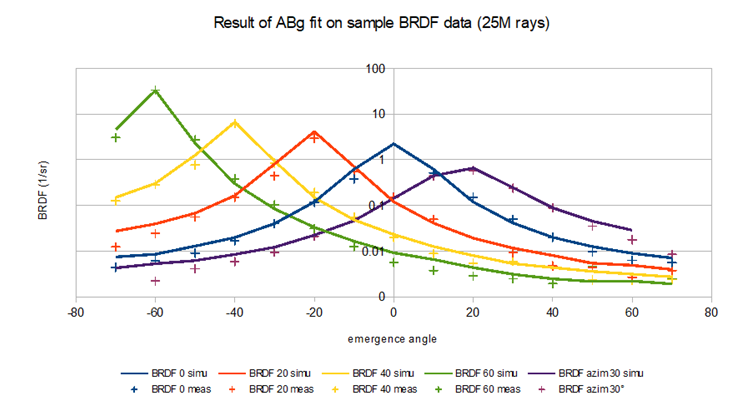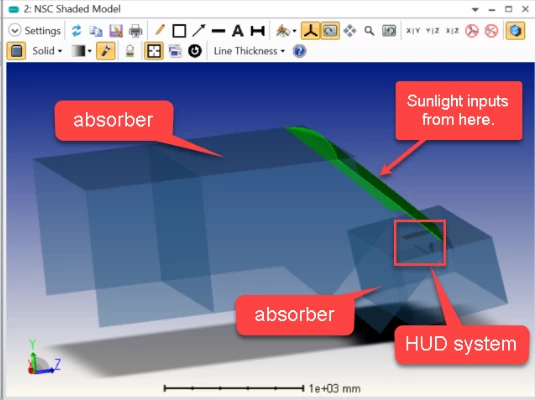Welcome
Welcome to the December edition of the Community update! This newsletter provides information and updates on technical content that is most relevant to you, the user! In this newsletter you will find:
Is this list missing something you want to see? Let us know in the comments!
Featured Community Posts
The wavefront is an important feature to evaluate the quality of an optical system. Understanding how OpticStudio computes this criterion is key to a good evaluation: OpticStudio has different settings and assumptions and the more you know them, the better. Questions and discussions on this topic have led to modifications and clarifications in the help files. So, we’ve decided to shine some light on the subject. Have a look at the posts below to find out more about it:
- Issue when Zernike coefficients are calculated at the image plane (Reference OPD = Absolute 2) -
@Sandrine explains how to fit a wavefront with Zernike polynomials and some of the important assumptions behind the tool. - How the polychromatic RMS wavefront error is calculated? -
@Csilla gives the details behind the polychromatic RMS wavefront value. -
How to change the wavefront error? -
@Jeff and@David discuss how to measure the wavefront and the DoF. -
The wavefront of the reference sphere - Display reference sphere on a layout plot -
@Sandrine describes the reference wavefront and how to plot it.
For more information regarding the sampling of the wavefront, you can also take a look at this Knowledgebase article: What does the sampling correspond to in wavefront-based calculations?
Knowledgebase Updates
Fitting ABg scattering coefficients from raw measured data
In this article we explain how to fit the coefficients of OpticStudio’s ABg model from partial BRDF measurements to get the most accurate model of scattering. We explore two aspects of the problem: fitting the coefficients and managing the TIS issue.

Stray light analysis for Heads-up-Display (3 part series)
In Part 1, the specular straylight path of the picture generation unit (PGU) and sunlight are analyzed. A scene and a simple camera are added to visualize the image of the scene and the PGU received by an eye camera. To simulate efficiently straylight from the sun, a method of reverse ray-tracing from the eye camera to the sun is discussed.
In Part 2, an API Analysis tool is introduced to visualize straylight caused by the sun. This is done using a reverse ray-tracing process.
In the final part, a CAD model of the mechanical housing is imported into the system. The straylight process is repeated to analyze the straylight paths caused by scattering from the mechanical housing.

Tech Tips Tuesday
Our technical team uses the software every day. Why not lean on them to help learn how to more efficiently model your systems? That’s the goal with our weekly Tech Tips! Every Tuesday, our team members will supply a short discussion or tutorial on the month’s featured topic. In December, the Tech Tip posts are focused on interior and exterior lighting. Check out the submissions by our team members on the People & Pointers forum here: People & Pointers | Zemax Community.
Zemax-er Spotlight: Benoit Moulin
Tell us about yourself
For 10 years I have worked for various photonics societies : industrial or research, start-up, sme, labs. Experiment and simulation are the key for development of photonic solutions. That was my work during this first part of my career. Since 2020 I am freelance consultant to bring my experience in both aspects. Actually my work is quite only simulation, but I have a global and practical approach of the systems. In two years I worked in a lot of different systems, from spatial specto-imaging to laser simulation, but also on consumer market solutions. It is very interesting, and training, to have this experience!
What part of the industry is most exciting to you?
Optics is the core technology for a wide range of technical devices. For that, working in photonics industry means to work on advanced technology in various scopes. That was exciting !
If you could offer one piece of advice to someone using OpticStudio, what would it be?
OpticStudio is a quite open software, a lot of options are available, and one can easily adapt its use to special needs with ZPL macro, ZPL solves, DLL etc... I often use the software quite like a programing software : with algorithmic operands in merit function, ZPL macros, tolerance scripts, user DLLs. I must admit ZPL macro is unfriendly for a beginner, but it worth learning it. Don't forget to open help tabs !
What’s the most challenging problem you’ve tackled with OpticStudio?
In general complex geometry in systems are challenging problems, especially when the goal is tolerancing : I use a lot of macro-solve to address it. But macro-solve may have some limitations due to updating of editors.
What contributions have you made to Zemax that others should know about?
I am working on my first knowledgebase article about ABg scattering model. In this article, I explain how to use ABg model from experimental data. It is useful for straylight analysis with special material for which BRDF is not fully known. This ABg fitting problem is quite challenging when I was working on it, but since then I see the solution is less difficult.



